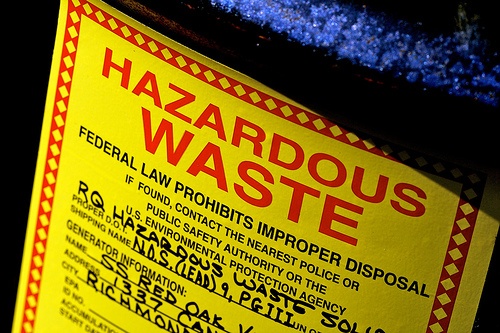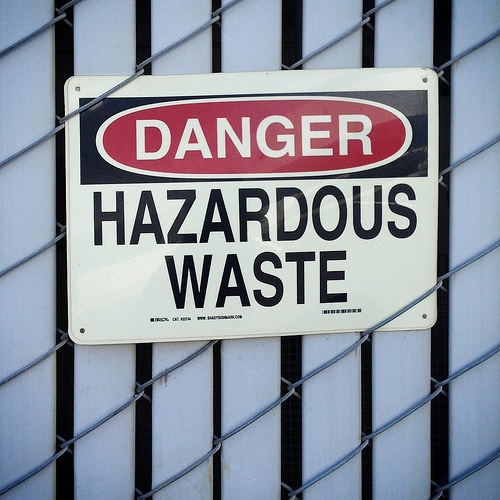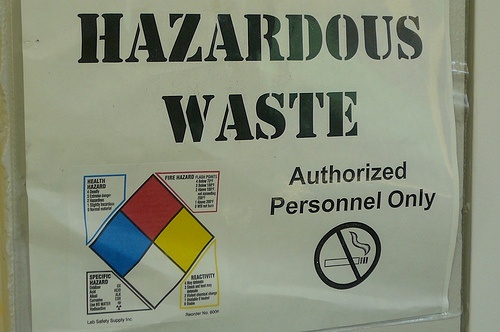Federal hazardous materials transportation laws assign the Department of Transportation’s (DOT’s) Pipeline and Hazardous Materials Safety Administration (PHMSA) general authority to designate hazardous materials and prescribe regulations for the “safe transportation of hazardous materials in intrastate, interstate, and foreign commerce.” PHMSA also prescribes criteria for handling hazardous materials, including training of personnel, inspections, and standards for operating and monitoring equipment.
These laws also authorize PHMSA and other DOT units to issue "special permits" that allow variances from federal requirements for up to two years. These special permits may be renewed for up to two years each time (and up to four years for variances from transport routing requirements). In 2012 “MAP-21” (Moving Ahead for Progress in the 21st Century Act) directed PHMSA to review special permits that had been in place for at least 10 years, and to adopt regulatory revisions by October 1, 2015. PHMSA was to apply the following factors to determine the suitability for adopting a special permit into its hazardous materials regulations (HMR):
Audit, Compliance and Risk Blog
DOT Converts Nearly 100 Variances Into Regulatory Options For Hazmat Shipping
Posted by Jon Elliott on Tue, Mar 29, 2016
Tags: Health & Safety, EHS, Hazcom, Transportation
Even if your organization is not required to do so, you should consider the benefits or being prepared to conduct emergency responses and evacuations. Well-developed emergency plans and proper employee training (so employees understand their roles and responsibilities) likely will result in fewer and less severe employee injuries and less structural damage to the facility during emergencies. A poorly prepared plan, on the other hand, likely will lead to a disorganized evacuation or emergency response, exacerbating confusion, injury, and property damage.
Which Employers Require An EAP?
The following OSHA Standards require you to prepare an EAP as part of your compliance with their requirements:
Read MoreTags: Employer Best Practices, Health & Safety, OSHA, EHS, EPA, Hazcom, PSMS, EAP
EPA Proposes Revisions To Accidental Release Prevention Requirements
Posted by Jon Elliott on Thu, Mar 17, 2016
Efforts to prevent and respond to chemical disasters are undergoing their first thorough review since many were created decades ago after December 1984’s catastrophe in Bhopal, India. President Obama triggered these reviews in August 2013, when he issued an Executive Order directing federal regulatory agencies to review specified regulatory programs that are designed to prevent such disasters: Occupational Safety and Health Administration’s (OSHA) Chemical Process Safety Management Standard (PSM); Environmental Protection Agency’s (EPA) Accidental Release Prevention (ARP) program and Emergency Planning and Right-to-Know Act (EPCRA) program; and Department of Homeland Security’s (DHS) Chemical Facility Anti-Terrorism Standards (CFATS) program (I blogged about the EO here, OSHA’s consideration of PSM changes here, EPA’s call for comments on possible ARP revisions here, one of the agencies’ joint reports here, and about subsequent revisions to CFATS here and here). On February 25, 2016 EPA proposed ARP revisions, which I describe below.
Read MoreCalifornia is a persistent exception to states’ limited abilities to create long-lasting effects on national environmental health and safety (EH&S) programs. One example, well-known here in California but relatively invisible to EH&S professionals outside the state, is Proposition 65.
Tags: OSHA, California Legislation, EHS, Hazcom, MSDS
Federal laws (commonly referred to as RCRA, after the Resource Conservation and Recovery Act of 1976) provide comprehensive management requirements for parties involved in hazardous waste management, from “cradle to grave” covering generators, transporters, and offsite management facilities. Among these many provisions are requirements that “large quantity generators (LQGs)” submit biennial reports to the Environmental Protection Agency (EPA) or delegated states in March of every even-numbered year. March 2016 is the next such deadline, so now is a good time to review biennial report requirements.
Who Must File Biennial Reports?
A facility that was an LQG during calendar year 2015 must file a biennial report. LQGs are defined as a facility that generates either of the following during a calendar month:
Tags: Environmental risks, Environmental, EHS, Hazcom, Canadian
Now in Effect: Electronic Logging Device Rules for U.S. Motor Carriers
Posted by STP Editorial Team on Tue, Feb 16, 2016
 Effective February 16, 2016, the U.S. Federal Motor Carrier Safety Administration (FMCSA) has revised the requirements for logging of commercial motor vehicle (CMV) drivers’ hours of service or “HOS.” A motor carrier operating CMVs must install and require each of its drivers to use an electronic logging device (ELD) to record the driver’s duty status no later than December 18, 2017.
Effective February 16, 2016, the U.S. Federal Motor Carrier Safety Administration (FMCSA) has revised the requirements for logging of commercial motor vehicle (CMV) drivers’ hours of service or “HOS.” A motor carrier operating CMVs must install and require each of its drivers to use an electronic logging device (ELD) to record the driver’s duty status no later than December 18, 2017.
Tags: Employer Best Practices, Health & Safety, Greenhouse Gas, ghg, Hazcom, Transportation
EPA Adopts Rules For Electronic Clean Water Act Reporting
Posted by Jon Elliott on Tue, Jan 26, 2016
The Clean Water Act (CWA) provides detailed national requirements, under which the U.S. Environmental Protection Agency (EPA) and states cooperate to establish water quality goals, and administer planning and discharge permit programs to preserve and enhance water quality nationwide. To improve the efficiency of these massive efforts, EPA has launched a series of initiatives to provide for electronic reporting and data management. Effective December 21, EPA has adopted extensive revisions to CWA rules to require electronic reporting instead of paper reporting under a wide variety of CWA provisions. These rules provide facilities with deadlines after 12 months (“Phase 1”) for high-priority discharger reports, and 5 years (“Phase 2”) for other discharger requirements. They also provide a series of deadlines for state regulators to share and report information electronically, ranging from 9 months to 6 years from now. EPA emphasizes that these revisions do not increase the amount of information reported by various entities, and so asserts that entities’ reporting burdens should actually diminish once they’ve managed their transition to the new methodologies. EPA also anticipates significant benefits from data sharing among agencies.
Read MoreTags: Health & Safety, EHS, EPA, Hazcom, Stormwater
EPA Proposes To Revise Hazardous Waste Generator Requirements–Part 2
Posted by Jon Elliott on Wed, Jan 20, 2016
Separate Summaries For Generator Categories
In September, EPA published substantial regulatory revisions (which EPA entitles collectively as the Hazardous Waste Generator Improvements Rule) to its regulation of hazardous waste generators under the Resource Conservation and Recovery Act. In Part 1 of this series of blogs (click here), I summarized the principal revisions. In this Part 2 I recast the proposal to compile changes applicable to different categories of generators:
-
“Conditionally exempt small quantity generators (CESQGs)” – which are being renamed as “very small quantity generator (VSQG)”.
-
Small quantity generators (SQGs).
-
Large quantity generators (LQGs).
What Requirements Would Apply To VSQGs?
EPA’s proposes to rename Conditionally Exempt Small Quantity Generators (CESQGs) as Very Small Quantity Generators (VSQGs), and to offer these generators additional flexibility. Eligibility for this category continues to be determine based on the following monthly waste generation volumes: Read MoreTags: Health & Safety, OSHA, EHS, EPA, Greenhouse Gas, Hazcom
EPA Proposes To Revise Hazardous Waste Generator Requirements–Part 1
Posted by Jon Elliott on Mon, Jan 18, 2016
Summary Of Proposals
The U.S. Environmental Protection Agency (EPA) has spent the last decade considering revisions to its hazardous waste management regulations (issued under federal laws generally referred to as the Resource Conservation and Recovery Act (RCRA)), exploring opportunities to clarify and simplify the text of the regulations and the actions necessary for compliance. In September, EPA published substantial regulatory revisions (which EPA entitles collectively as the Hazardous Waste Generator Improvements Rule) in the Federal Register; comments were due by December 24, after which EPA will decide whether to finalize the changes. EPA calculates that these proposals will include more than 60 changes to specific requirements, and more than 30 additional technical clarifications and corrections. These revisions would clarify some existing provisions, remove some longstanding requirements, and also add some additional new requirements. Some requirements apply to nearly all generators, while others are targeted at one or more of three volume-based tiers.
Read MoreTags: Health & Safety, OSHA, EHS, EPA, Hazcom









